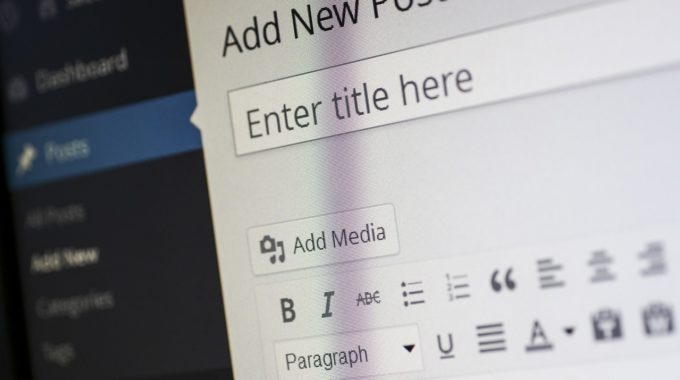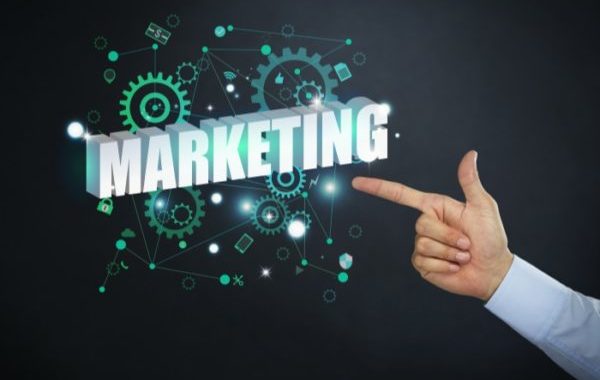
6 Kinds of Content That’ll Help You If You are a Marketer
How can you create content with the most ease and efficiency? As a marketer, you are always challenging yourself to come up with new ideas and new ways of imparting information about your business. You may even want to experiment with different kinds of content that your customers are most likely to read about. To help you out, we will be revealing the 6 types of content that will help out if you’re a marketer.
Numerous industry studies have found out that around 69% of marketers are creating more content than they were a year ago. Out of them, only 27% of them have a strategy that is documented. That being said, content is booming, with around 65% of respondents saying that they are creating more engaging and high-quality content than ever before.
As a marketer, it takes quite a bit of skill to sell your products and services through content, and it takes more than just having quality headlines, working with images, or exploring different social media channels to attain success. Today, we are going to be talking about the kinds of content that you need to be posting if you’re a marketer to find success.
What Kinds of Content Work Best and Why?
It is important that you are creating content that is goal-driven because what you create should be driven by what you want to achieve. In order to succeed, most websites only need about four key types of content to be successful.
1. Content to Entertain
Most efforts of content marketing tend to focus on helpfulness and education, and while that is a great track to take, it can also be a missed opportunity to interact with your readers and connect with them on a very basic human-to-human level. Content that entertains is often funny, frequently highly shareable, and often is able to quickly transform a company. That is crucial in building trust and separating the true fans from random visitors to your website.
In short, content that has been created to entertain may not be directly related to your products or services, but to do its job, it needs to appeal to your target audience.
2. Content to Educate
Content that has been created specifically to educate achieves the same goals as content to entertain but often goes a step further to show readers and potential users why your website or product is worth sticking around for. While content to entertain appeals to a reader’s emotions, content to educate appeals to their rationality.
3. Content to Inspire
Inspiration is contagious and when done right, and it happens when something you publish resonates with a lot of people extremely quickly, they can’t help but share it. Inspiration doesn’t necessarily have to be restricted to quotes on a picture. The best form of inspiration comes in the form of case studies, customer testimonials, and stories of failure and challenges that successful people have faced along the way.
4. Content to Convert
Content that has been created for the purpose of conversion is generally meant to nudge readers into the direction of some sort of action. For instance, signing up for a newsletter, taking a free e-course, or buying a new product.
The 6 Kinds of Content That Will Help You
Now that we have talked about what kinds of content work best and why, we will get into the thick of the action and share the 6 kinds of content that you should use as a marketer.
1 .Infographics
It’s been proven repeatedly that human beings are, by and large, mostly visual learners. One study showed that after three days, a person would retain only 10 to 20% of written or spoken information but almost 65% of visual information; this is a testament to the power of images. Another study showed that an illustrated text was 9% more effective than text alone when testing immediate comprehension and 83% more effective when the test was delayed.
It’s no surprise that readers not only enjoy looking at infographics but are also more likely to remember them and the information contained in them. That makes infographics a particularly good type of content to use on your blog or for your brand messaging. They’re digestible, good to look at, and can be a lot of fun sometimes. Infographics are especially good when you have data-heavy research or numbers and statistics that can make for dry reading.
The best part about infographics is that they get shared and shared frequently. When creating infographics, remember to:
Focus on Quality and Visual Appeal
There are several free tools for creating infographics; if you’re not skilled at the art of visual design or don’t fancy learning now, investing in a professional to create one excellent infographic will always trump creating a lot of mediocre ones.
Have Fresh Content
Even though it can be tempting to create an infographic from regurgitated research, it is suggested that you should always go for new and fresh ideas that haven’t previously been shared. New research or studies in your industry that haven’t been released can be a fantastic way to share new content. You may have some numbers or theories from your own research too. Or you can put together findings from companies that aren’t well-known. Whatever way you choose, remember to make your infographics fresh, current, and relevant for your readers.
Be Generous
It can be a little counterproductive to spend time, resources, and money in creating an infographic only then to keep it exclusive to your website. By their nature, infographics are meant to be widely shared, and you will truly benefit from yours if you make it shareable. A great way to do that is to include the embed code on your website with the infographic so that anyone who may want to use it can grab it from your website.
2. Lists
Brands and bloggers are now discovering what women’s magazines have known for decades: lists work, and top 10 lists work even more. That means you should create more lists but when creating lists here is what you must remember:
Meet a Need
Try not to create a list for the sake of creating a list, but because it will help your users and readers to solve a problem or fill a need.
Experiment with Numbers
Even though top 10 lists are and always have been popular, lists of dozens and sometimes hundreds of resources, tips, and strategies, tend to do very well, especially online where users can save them for later and refer to them as they move through the list.
Make Them Skimmable
Lists are frequently skimmed through and not read, so make sure to number them and headline them nicely so that someone who’s looking to go through them quickly can still get a bulk of information that they need.
3. Case Studies and Success Stories
Everyone is wired to love stories, and the benefits of storytelling are well-documented. The best kind of stories almost always follow a three-act structure, a model used in screenwriting that divides a fictional narrative into three parts:
The Setup
This is where the world is created and the level set for what people are expected to do, be like, and behave like. This act shows what normal life looks like in the world, and by the end of act one, something happens to disrupt this normal life and cause our protagonist to jump into action or make a decision.
The Confrontation
The second act is where our protagonist finds solutions to her problems, only to keep finding bigger problems. The protagonist doesn’t yet have the skills or experience to deal with the problems that are thrown her way. To succeed, the protagonist must learn a new skill, have a new experience, or have a eureka moment that elevates her to the next level.
The Resolution
This is the final act, where the story is brought to its intense moment and the final climax. Victory has arrived, and the protagonist and other characters have a new sense of who they are.
4. How-to-Guides
When you’re thinking of writing a how-to guide on your website, you should go long. The perfect post is known to be 1,500 words long, but the more in-depth you go with an idea or topic, the meatier it is going to be, and that increases its likelihood of being read and shared. The ideal blog post comes to a 7-minute read, and that is approximately 1,600 words.
A great way to think about how-to guides or longer blog posts is to think of them as list blog posts with only two or three bullet points, where you’re diving deeply into the bullet points.
5. Personal Stories
It’s not a secret that when it comes to social media, emotions rule the day, and it stands to reason then, that if you’re creating content for your audience, getting them to engage with it on an emotional level is a fantastic way to connect with them. Personal stories come in many shapes and forms and are mainly personal essays or opinions and rants.
6. Resources and Tools
A list of resources and tools can be a fantastic way to deliver value to your audience and simultaneously work with a content type that isn’t quite as time- and work-intensive. The best resources and tools tend to go long, and it is preferred to give users a choice of every resource and let them decide for themselves based on their preferences.
Dave Brown is a Sr. Editor at Content Development Pros – a digital marketing agency that provides comprehensive content solutions, including blogs, articles, and website copywriting services to small and mid-sized businesses.




“Blogging” can make up the cornerstone of your “content marketing strategy”, but it shouldn’t be the only type of content you’re utilizing to increase traffic, generate leads, and drive sales. A diverse content marketing strategy will always be best, helping you to get the long-term, sustainable, and significant results out of your campaigns. Content marketing is a big time & sometimes financial investment, after all—you want to make sure you’re getting your money’s worth.
Cheers 🙂